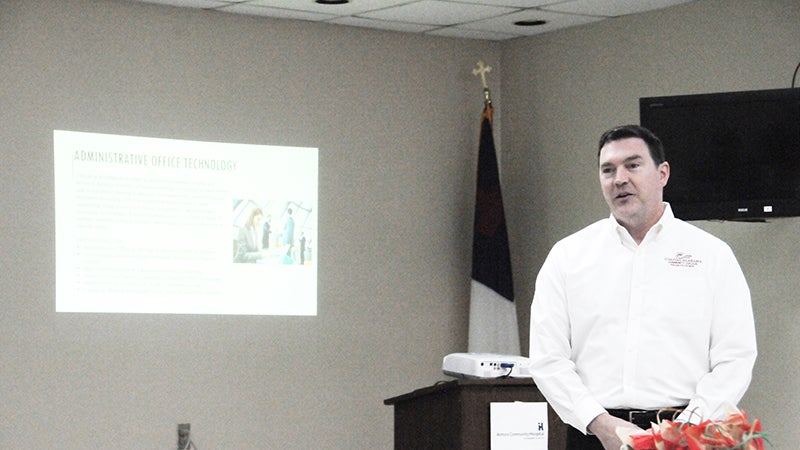CACC design officials talk new projects at Rotary Club
Published 12:00 am Wednesday, January 2, 2019
Coastal Alabama Community College instructors and officials said a recently awarded National Science Foundation grant will help students with work development upon graduation.
Dr. Melinda Byrd-Murphy, dean of instructional services and external funding; Elizabeth “Tiz” Thompson Day, chair of the applied technologies division; Patty Hughston, interim president; and animation instructor Steven Hussey were guest speakers at the Atmore Rotary Club’s Dec. 18 meeting.
The three-year Advanced Technological Education grant, at more than $500,000, will allow the community college to develop world-class training curriculum and prototype training simulations using virtual reality (VR), augmented reality (AR) and mixed reality (MR) Hololens technologies.
The project will support the growing use of VR/AR/MR in multi-industry training using an aligned, comprehensive curriculum and industry-based experiences, according to CACC. And it will not only instruct students on the standards of use for such simulations, but it will help refine and create national industry standards and the integration of those benchmarks in the project curriculum.
Hussey has been in the animation and viualization fields for more than 18 years. He started his work in landscape architecture, and soon started building 3D models using a computer-aided design program (CAD).
“Once you get into it, it’s a lot of fun, but it does so many things for the design industry,” he said.
In the applied technologies division animation, which includes interactive technology, video graphics and visual effects, students learn 3D modeling and video editing; how to design and produce an animation film; to incorporate live action and 3D elements to produce simulation projects; and to showcase students’ creativity and knowledge in a project.
The Dynamic Reality Technologies program allows students to learn 3D modeling and game design, to develop a VR game and more.
Hussey said the DRT program is one that students equate with making video games. He said the DRT program essentially helps students create virtual models for businesses.
“In the elevator industry, right now they can go to New York where a big training center is held,” he said. “Elevator techs do all their own stuff. They maintain and install, and have an aging work force. You could go into the industry and start out making $50,000-$60,000. They’ll learn how to model in 3D, predict in simulations, but they’ll be able to go to a business and assess their needs for marketing, and training and day to day operations.”
Hughston said this program is a valuable asset for students.
“This is one of the programs as a community college we’re reaching out o find the best, so we an train with students and send them out to the workforce,” she said. “It’s amazing for me to watch from a distance as every month, something new and virtual is coming out. Virtual training is becoming a very big part of what businesses are doing.”





